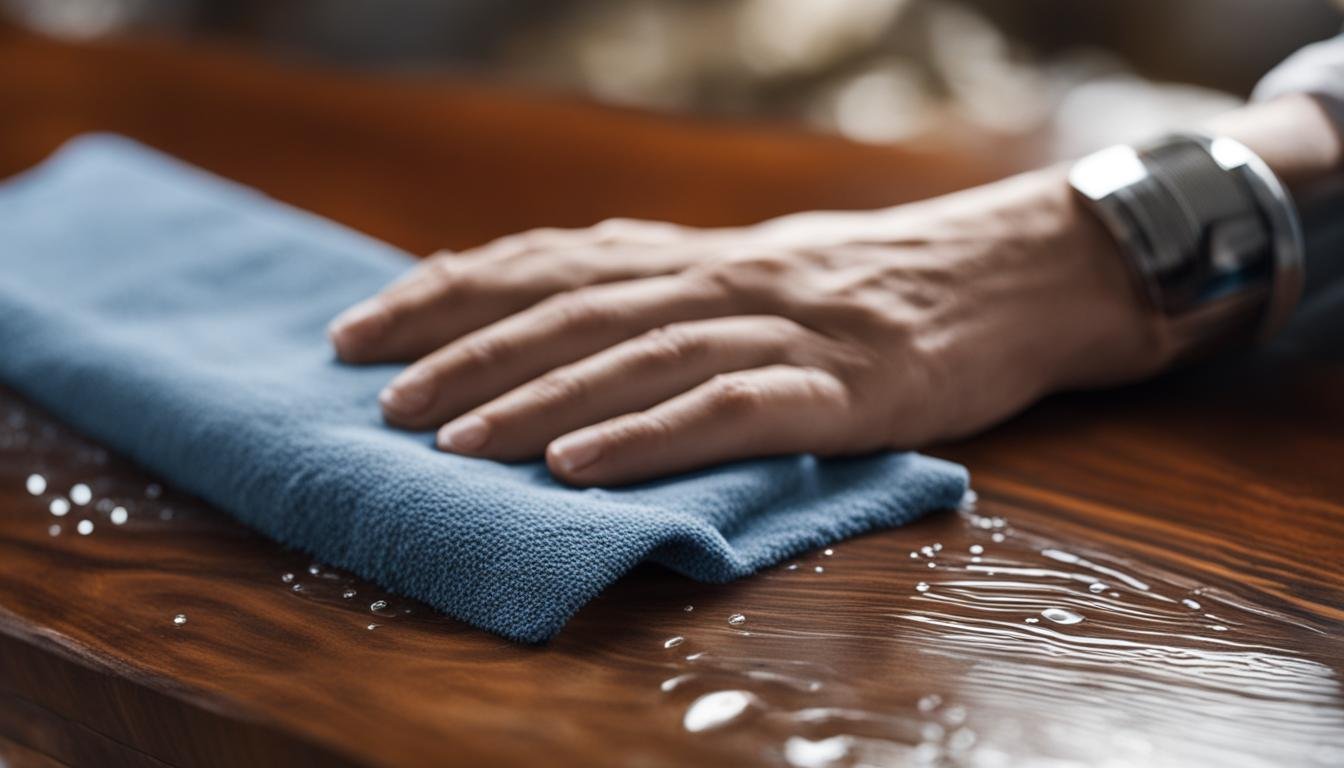When vacuuming, it’s common for the vacuum cleaner to bump against the legs of furniture, leaving behind white marks. Fortunately, there are effective techniques to remove these marks without damaging the furniture’s finish. One solution is to mix equal parts nongel toothpaste and baking soda, apply the mixture to a slightly damp cloth, and rub it onto the marks with moderate pressure. Another option is to use a tennis ball on a mop or broom handle to gently buff away the marks. Additionally, there are commercial cleaning products and equipment, such as floor buffers or burnishers with the appropriate pads, that can be used to remove scuff marks from different types of flooring. Overall, taking proper care of furniture and using the right cleaning methods can help maintain its appearance and remove vacuum cleaner marks effectively.
Key Takeaways:
- Use a mixture of nongel toothpaste and baking soda on a damp cloth to rub away vacuum cleaner marks from furniture.
- A tennis ball on a mop or broom handle can be used to gently buff away marks without damaging the furniture’s finish.
- Commercial cleaning products and equipment, such as floor buffers or burnishers, can effectively remove stubborn scuff marks from different types of flooring.
- Regular furniture care and maintenance, including dusting and gentle cleaning, can prevent the accumulation of vacuum cleaner marks.
- Upholstery cleaning tips can be helpful for fabric-covered furniture with vacuum cleaner marks.
Simple Methods for Removing Vacuum Cleaner Marks
If you’ve ever noticed unsightly vacuum cleaner marks on your furniture, don’t worry, there are simple methods to remove them without causing any damage. Here are two effective techniques you can try:
Mixing Toothpaste and Baking Soda
One easy method is to create a paste using equal parts nongel toothpaste and baking soda. The gentle abrasiveness of this mixture can help lift the marks off the furniture’s surface. Here’s how:
- Take a slightly damp cloth.
- Mix the toothpaste and baking soda to create a paste.
- Apply the paste onto the cloth.
- Gently rub the cloth over the vacuum cleaner marks with moderate pressure.
- Continue rubbing until the marks are completely removed.
Be patient, as it may take several applications to completely eliminate the marks. This method is suitable for various types of furniture.
Using a Tennis Ball
Another effective method involves using a tennis ball attached to a mop or broom handle. The rubber material of the tennis ball acts as a gentle abrasive and can help buff away the marks without damaging the furniture’s finish. Follow these steps:
- Attach a tennis ball securely to a mop or broom handle.
- Hold the handle and position the tennis ball over the vacuum cleaner marks.
- Apply moderate pressure and rub the ball in circular motions.
- Continue rubbing until the marks are completely gone.
This method is also suitable for various types of furniture and provides an easy and efficient way to remove vacuum cleaner marks.
| Advantages | Disadvantages |
|---|---|
| Simple and affordable | May require multiple applications |
| Effective on various furniture types | Not suitable for deep or extensive marks |
| Gentle on furniture’s finish | – |
Using these simple methods, you can easily remove vacuum cleaner marks from your furniture and restore its appearance. Remember to always test the cleaning solutions on a small, inconspicuous area before applying them to the entire surface. With proper care and maintenance, your furniture will stay mark-free and looking its best.
Professional Solutions for Removing Vacuum Cleaner Marks
When it comes to stubborn or extensive vacuum cleaner marks on your furniture, you may need to turn to professional solutions. Commercial cleaning products and equipment are designed to effectively remove scuff marks from different types of furniture surfaces. For optimal results, it’s important to choose the correct pads and techniques that are safe for your furniture.
In addition to professional solutions, regular furniture care plays a crucial role in maintaining the appearance of your furniture and preventing the accumulation of vacuum cleaner marks. Dusting regularly and using gentle cleaning products can help keep your furniture looking clean and well-maintained. Upholstery cleaning and maintenance tips are also useful, especially for fabric-covered furniture that may have vacuum cleaner marks. These tips can help you effectively remove the marks and restore the beauty of your upholstery.
By following these professional solutions and incorporating furniture care and upholstery cleaning into your routine, you can successfully remove vacuum cleaner marks from your furniture. With the right cleaning tips and techniques, you can keep your furniture looking its best for years to come.
FAQ
How can I remove vacuum cleaner marks from furniture?
One simple method is to mix equal parts nongel toothpaste and baking soda to make a paste. Apply the paste to a slightly damp cloth and rub it onto the marks with moderate pressure. Another option is to use a tennis ball attached to a mop or broom handle to gently buff away the marks.
Are there any professional solutions for removing vacuum cleaner marks?
Yes, for more stubborn or extensive marks, you can use commercial cleaning products and equipment such as floor buffers or burnishers with the appropriate pads. It’s important to choose the correct pads and techniques to avoid damaging the furniture.
What other tips can help prevent and remove vacuum cleaner marks from furniture?
Regular furniture care, including dusting and cleaning with gentle cleaning products, can help prevent the accumulation of vacuum cleaner marks. Upholstery cleaning and maintenance tips are also beneficial for fabric-covered furniture.





Leave a Reply